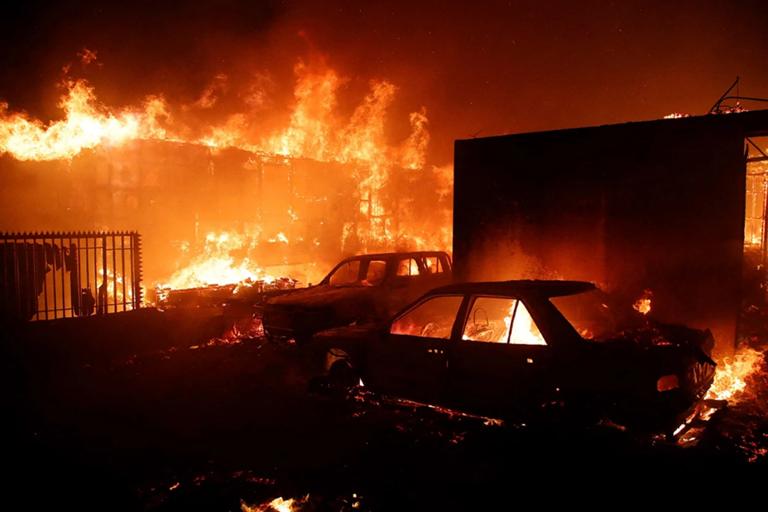Catastrophic fires have multiple causes, but climate change is one of the key drivers. Climate change is also cutting cloud cover and shrinking glaciers in the Chilean Andes. That means a decrease in reflected sunlight and, as a result, increasing temperatures. This year, the effects of climate change have been amplified by a strong El Niño climatic pattern. Warm sea-surface temperatures off Chile’s coast have intensified inland temperatures and fuelled warm easterly winds blowing across the Andes from Argentina toward Chile, fanning the fire.

In Chile, more than 130 people have died in this year’s wildfires — the deadliest in the nation’s history. In Colombia last month, wildfire smoke billowed just outside Bogotá, defying the city’s reputation for cold, wet weather. And in Argentina, a wildfire ravaged a forest that is listed as a World Heritage Site by the United Nations cultural organization UNESCO.
These wildfires add to the destruction from record-setting fires in the Amazon in October 2023. This is not a normal pattern: in many parts of the region, wildfires are not part of the landscape’s natural history, except for blazes caused by “occasional lightning strikes”, says Francisco de la Barrera, an environmental scientist at University of Concepción in Chile.
But scientists say that the flames have been fanned by a combination of a strong El Niño climate pattern, a profusion of non-native trees and climate change. Researchers warn that the same factors could put other cities on the continent at risk.
“We are very worried, because each new fire is bigger, more threatening and with an ever-greater impact,” says de la Barrera. Catastrophic fires have multiple causes, but climate change is one of the key drivers, says climatologist Maisa Rojas Corradi, who is Chile’s environment minister. In the past decade, the country has had 16 megafires, which coincided with “the highest temperatures recorded for central Chile”, Rojas says. A megadrought that descended on the region in 2010 is one of the longest in a millennium, says Wenju Cai, a climatologist at Australia’s national science agency, CSIRO, in Melbourne.
Climate change is also cutting cloud cover and shrinking glaciers in the Chilean Andes, says Cai. That means a decrease in reflected sunlight and, as a result, increasing temperatures.
This year, the effects of climate change have been amplified by a strong El Niño climatic pattern, Cai says. Warm sea-surface temperatures off Chile’s coast have intensified inland temperatures and fuelled “warm easterly winds blowing across the Andes from Argentina toward Chile, fanning the fire,” he says.
Sources:
NATURE
https://www.nature.com/articles/d41586-024-00471-4 .
Provided by the IKCEST Disaster Risk Reduction Knowledge Service System
Comment list ( 0 )
